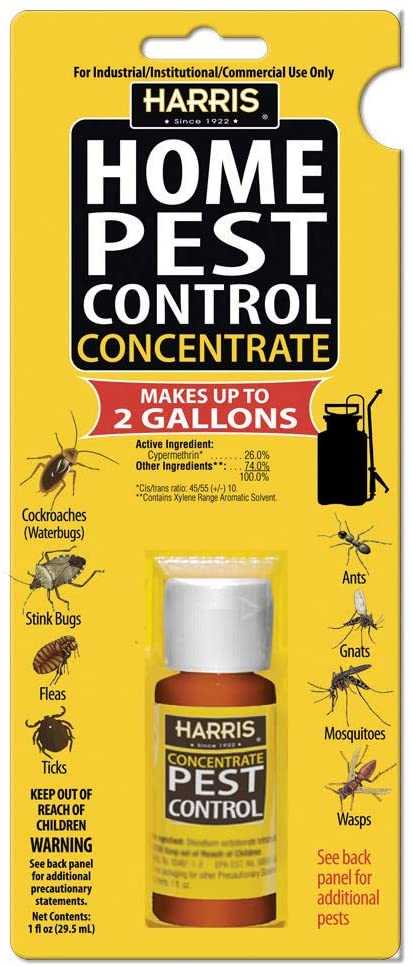High Quality A1 Pest Control Services Charlotte - Secure Your Home
High Quality A1 Pest Control Services Charlotte - Secure Your Home
Blog Article
Bed Pest Therapy Break Down: Contrasting Chemical Vs. Non-Chemical Solutions
In the realm of pest control, specifically when taking care of the consistent problem of bed insects, the selection in between chemical and non-chemical treatment services can be a crucial one. Both strategies use distinctive advantages and downsides, affecting factors such as efficiency, security factors to consider, and general price. By taking a look at the nuanced details of each technique, a clearer understanding of which course to go after in attending to a bed bug infestation can be attained.
Efficiency of Chemical Therapies
Chemical therapies for bed bug infestations have been extensively recognized for their fast and potent efficiency in eliminating these bugs. When taking into consideration the efficiency of chemical treatments, it is important to recognize that they can offer a extensive and fast service to a bed insect issue.
Furthermore, chemical treatments have the advantage of providing recurring effects, implying that they can remain to remove bed pests even after the initial application. This residual action is particularly beneficial in combating any type of possible re-infestations. In addition, the fast action of chemical treatments can bring relief to individuals dealing with serious bed insect problems, enabling them to gain back control of their space rapidly.
Security Issues With Chemical Solutions
One crucial element that calls for careful consideration when using chemical options for bed bug treatment is ensuring the security of residents and the atmosphere. Direct exposure to certain chemicals utilized in bed bug therapies can lead to respiratory concerns, skin irritation, or various other adverse responses, specifically in individuals with pre-existing conditions or level of sensitivities.
Moreover, the environmental impact of chemical services is another significant consideration. Some pesticides made use of in bed insect treatments may be damaging to helpful pests, wild animals, and ecological communities if they leach right into the dirt or water systems. It is essential to utilize chemical therapies carefully, complying with safety standards, and taking into consideration less toxic options to alleviate these dangers and make sure the reliable and risk-free management of bed pest invasions.
Advantages of Non-Chemical Methods
Taking into consideration the potential safety issues and environmental effect connected with chemical solutions for bed insect treatment, discovering non-chemical approaches offers an appealing option with several distinctive advantages. Non-chemical treatments are eco pleasant, as they do not add to air or water air pollution, making them a sustainable selection for pest control.
Furthermore, non-chemical services can be efficient in targeting bed pests, consisting of hard-to-reach areas where chemical treatments might not pass through - A1 pest control services charlotte. Approaches such as heat treatment, vacuuming, steam cleaning, and mattress coverings offer extensive obliteration without the use of hazardous chemicals.
Limitations of Non-Chemical Treatments

Additionally, non-chemical therapies commonly need multiple applications to attain successful elimination. This can be time-consuming and may not always guarantee complete removal of all bed insects and their eggs, specifically in surprise or hard-to-reach areas.
Additionally, the success of non-chemical treatments greatly relies upon proper execution and thoroughness, which can be testing for individuals without expert expertise. Insufficient application of non-chemical techniques may lead to insufficient elimination, resulting in consistent problems and the requirement for additional therapies.
Therefore, while non-chemical therapies have their advantages, it is important to recognize these limitations and consider them when figuring out one of the most effective strategy for handling bed pest invasions.
Cost Comparison: Chemical Vs. Non-Chemical Options
Offered the restrictions associated with non-chemical treatments, an important element to evaluate in the context of bed insect monitoring is the expense comparison between chemical and non-chemical choices. Chemical treatments normally entail the application of pesticides by professionals, which can range from $250 to $900 per area, depending on the intensity of the problem and the dimension of the location to be treated. On the other hand, non-chemical therapies like warmth therapy or steam can be a lot more pricey, with expenses varying from $1,000 to $6,000 for an entire home. While the first cost of chemical therapies may appear lower, numerous therapies may be needed to completely get rid of the problem, potentially enhancing the general expense. On the other hand, non-chemical Check Out Your URL alternatives may offer a much more eco-friendly and lasting solution, although they can be cost-prohibitive for some people. Inevitably, when taking into consideration the price of bed pest treatment choices, it is essential to weigh the ahead of time expenditures versus the effectiveness and long-term sustainability of the picked technique.
Conclusion

Taking into consideration the possible safety and security concerns and environmental impact linked with chemical services for bed pest therapy, checking out non-chemical approaches provides an appealing choice with numerous distinct advantages.Offered the limitations associated with non-chemical therapies, an essential facet to assess in the context of bed bug administration is the cost comparison between chemical and non-chemical options. In comparison, non-chemical treatments like warm therapy or vapor can be extra expensive, with prices ranging from $1,000 to $6,000 for a whole home. While the first cost of chemical therapies may seem reduced, multiple therapies may be called for to totally eliminate the problem, potentially raising the total expense.In verdict, when comparing chemical and non-chemical bed pest therapy choices, it is crucial to take into consideration effectiveness, safety and security, advantages, restrictions, and price.
Report this page